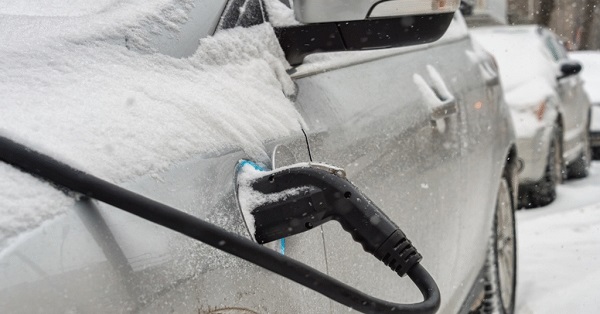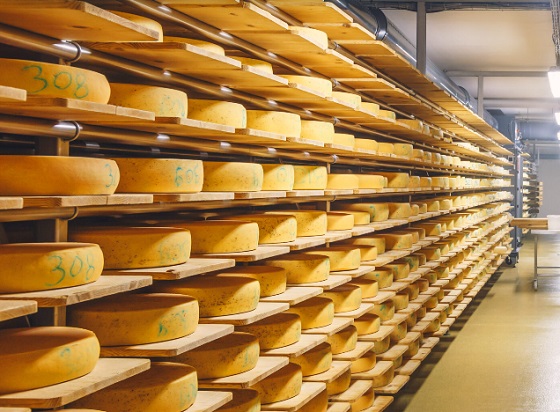Uncategorized
Election Day tests Democratic resistance in Trump era
WASHINGTON — A turbulent election season that tested President Donald Trump’s slash-and-burn political style against the strength of the Democratic resistance comes to a close as Americans cast ballots in the first national election of the Trump era.
With voters going to the polls Tuesday, nothing is certain. Weather could affect turnout, with residents of several states in the Deep South and Mid-Atlantic contending with thunderstorms, high winds and power outages.
Anxious Republicans privately expressed confidence in their narrow Senate majority but feared the House was slipping away. Trump, the GOP’s chief messenger, warned that significant Democratic victories would trigger devastating consequences.
“If the radical Democrats take power they will take a wrecking ball to our economy and our future,” Trump declared in Cleveland, using the heated rhetoric that has defined much of his presidency. He added: “The Democrat agenda is a socialist nightmare.”
Democrats, whose very relevance in the Trump era depended on winning at least one chamber of Congress, were laser-focused on health care as they predicted victories that would break up the GOP’s monopoly in Washington and state governments.
“They’ve had two years to find out what it’s like to have an unhinged person in the White House,” said Washington Gov. Jay Inslee, who leads the Democratic Governors Association. “It’s an awakening of the Democratic Party.”
Democrats could derail Trump’s legislative agenda for the next two years should they win control of the House or the Senate. Perhaps more important, they would claim subpoena power to investigate Trump’s personal and professional shortcomings.
Some Democrats have vowed to force the release of his tax returns. Others have pledged to pursue impeachment, although removal from office is unlikely so long as the GOP controls the Senate or maintains even a healthy minority.
Democrats’ fate depends upon a delicate coalition of infrequent voters — particularly young people and minorities — who traditionally shun midterm elections.
If ever there was an off-year election for younger voters to break tradition, this is it. Young voters promised to vote in record numbers as they waged mass protests in the wake of the February mass shooting at a Parkland, Florida, high school that left 17 students and staff dead.
Democrats are drawing strength from women and college-educated voters, who swung decidedly against Trump since his election. Polling suggests the Republican coalition is increasingly older, whiter, more male and less likely to have a college degree.
Democrats boast record diversity on the ballot.
Three states could elect their first African-American governors, while several others are running LGBT candidates and Muslims. A record number of women are also running for Senate, House, governorships and state legislative seats.
“The vast majority of women voters are angry, frustrated and they are really done with seeing where the Republican Party is taking them, particularly as it related to heath care and civility,” said Stephanie Schriock, who leads EMILY’s List, a group that help elect Democratic women. “You’re going to see the largest gender gap we’ve ever seen.”
The political realignment, defined by race, gender and education, could re-shape U.S. politics for a generation. The demographic shifts also reflect each party’s closing argument.
While the economy continues to thrive, Trump has spent much of the campaign’s final days railing against a caravan of Latin American immigrants hoping to seek asylum at the U.S. border. He dispatched more than 5,000 troops to the region, suggesting soldiers would use lethal force against migrants who throw rocks, before later reversing himself.
Republicans have privately encouraged the president to back off, to no avail.
Democrats, meanwhile, have beat their drum on health care.
“Health care is on the ballot,” former President Barack Obama told Democratic volunteers in Virginia. “Health care for millions of people. You vote, you might save a life.”
Tuesday’s results will be colored by the dramatically different landscapes in the fight for the House and Senate.
Most top House races are set in America’s suburbs where more educated and affluent voters in both parties have soured on Trump’s presidency, despite the strength of the national economy. Democrats were buoyed by a wave of Republican retirements and an overwhelming fundraising advantage.
Jay Hutchins, a 49-year-old Democrat who voted in the Washington suburb of Silver Spring, Maryland, is among those dissatisfied with Trump and the Republican-led Congress.
“I’m not pleased with Trump’s leadership at all. I think he’s trying to divide this country,” said Hutchins, a
But in Ohio, Judy Jenkins, a 60-year-old Republican, said she was voting exclusively for GOP candidates. She said she used to vote for candidates from both major parties, but vowed never to support a Democrat because she was so upset by how new Supreme Court Justice Brett Kavanaugh was treated in his confirmation process. She also backs Trump and said Republicans are moving in the right direction on health care.
Republicans “have actually brought the change,” she said. “That’s why our economy is growing like it is. They may not be perfect, but who is?”
Democrats need to pick up two dozen seats to claim the House majority.
They face a far more difficult challenge in the Senate, where they are almost exclusively on
Democrats need to win two seats to claim the Senate majority.
Given Trump’s stunning victory in 2016, few were confident in their predictions.
“I feel less comfortable making a prediction today than I have in two decades,” Republican pollster Frank Luntz said.
___
Associated Press writers Kantele Franko in Westerville, Ohio, Michael Kunzelman in Silver Spring, Maryland and Eric Tucker in Washington contributed to this report.
For AP’s complete coverage of the U.S. midterm elections: http://apne.ws/APPolitics
Steve Peoples, The Associated Press
Uncategorized
Mortgaging Canada’s energy future — the hidden costs of the Carney-Smith pipeline deal


Much of the commentary on the Carney-Smith pipeline Memorandum of Understanding (MOU) has focused on the question of whether or not the proposed pipeline will ever get built.
That’s an important topic, and one that deserves to be examined — whether, as John Robson, of the indispensable Climate Discussion Nexus, predicted, “opposition from the government of British Columbia and aboriginal groups, and the skittishness of the oil industry about investing in a major project in Canada, will kill [the pipeline] dead.”
But I’m going to ask a different question: Would it even be worth building this pipeline on the terms Ottawa is forcing on Alberta? If you squint, the MOU might look like a victory on paper. Ottawa suspends the oil and gas emissions cap, proposes an exemption from the West Coast tanker ban, and lays the groundwork for the construction of one (though only one) million barrels per day pipeline to tidewater.
But in return, Alberta must agree to jack its industrial carbon tax up from $95 to $130 per tonne at a minimum, while committing to tens of billions in carbon capture, utilization, and storage (CCUS) spending, including the $16.5 billion Pathways Alliance megaproject.
Here’s the part none of the project’s boosters seem to want to mention: those concessions will make the production of Canadian hydrocarbon energy significantly more expensive.
As economist Jack Mintz has explained, the industrial carbon tax hike alone adds more than $5 USD per barrel of Canadian crude to marginal production costs — the costs that matter when companies decide whether to invest in new production. Layer on the CCUS requirements and you get another $1.20–$3 per barrel for mining projects and $3.60–$4.80 for steam-assisted operations.
While roughly 62% of the capital cost of carbon capture is to be covered by taxpayers — another problem with the agreement, I might add — the remainder is covered by the industry, and thus, eventually, consumers.
Total damage: somewhere between $6.40 and $10 US per barrel. Perhaps more.
“Ultimately,” the Fraser Institute explains, “this will widen the competitiveness gap between Alberta and many other jurisdictions, such as the United States,” that don’t hamstring their energy producers in this way. Producers in Texas and Oklahoma, not to mention Saudi Arabia, Venezuela, or Russia, aren’t paying a dime in equivalent carbon taxes or mandatory CCUS bills. They’re not so masochistic.
American refiners won’t pay a “low-carbon premium” for Canadian crude. They’ll just buy cheaper oil or ramp up their own production.
In short, a shiny new pipe is worthless if the extra cost makes barrels of our oil so expensive that no one will want them.
And that doesn’t even touch on the problem for the domestic market, where the higher production cost will be passed onto Canadian consumers in the form of higher gas and diesel prices, home heating costs, and an elevated cost of everyday goods, like groceries.
Either way, Canadians lose.
So, concludes Mintz, “The big problem for a new oil pipeline isn’t getting BC or First Nation acceptance. Rather, it’s smothering the industry’s competitiveness by layering on carbon pricing and decarbonization costs that most competing countries don’t charge.” Meanwhile, lurking underneath this whole discussion is the MOU’s ultimate Achilles’ heel: net-zero.
The MOU proudly declares that “Canada and Alberta remain committed to achieving Net-Zero greenhouse gas emissions by 2050.” As Vaclav Smil documented in a recent study of Net-Zero, global fossil-fuel use has risen 55% since the 1997 Kyoto agreement, despite trillions spent on subsidies and regulations. Fossil fuels still supply 82% of the world’s energy.
With these numbers in mind, the idea that Canada can unilaterally decarbonize its largest export industry in 25 years is delusional.
This deal doesn’t secure Canada’s energy future. It mortgages it. We are trading market access for self-inflicted costs that will shrink production, scare off capital, and cut into the profitability of any potential pipeline. Affordable energy, good jobs, and national prosperity shouldn’t require surrendering to net-zero fantasy.If Ottawa were serious about making Canada an energy superpower, it would scrap the anti-resource laws outright, kill the carbon taxes, and let our world-class oil and gas compete on merit. Instead, we’ve been handed a backroom MOU which, for the cost of one pipeline — if that! — guarantees higher costs today and smothers the industry that is the backbone of the Canadian economy.
This MOU isn’t salvation. It’s a prescription for Canadian decline.
Uncategorized
Cost of bureaucracy balloons 80 per cent in 10 years: Public Accounts

The cost of the bureaucracy increased by $6 billion last year, according to newly released numbers in Public Accounts disclosures. The Canadian Taxpayers Federation is calling on Prime Minister Mark Carney to immediately shrink the bureaucracy.
“The Public Accounts show the cost of the federal bureaucracy is out of control,” said Franco Terrazzano, CTF Federal Director. “Tinkering around the edges won’t cut it, Carney needs to take urgent action to shrink the bloated federal bureaucracy.”
The federal bureaucracy cost taxpayers $71.4 billion in 2024-25, according to the Public Accounts. The cost of the federal bureaucracy increased by $6 billion, or more than nine per cent, over the last year.
The federal bureaucracy cost taxpayers $39.6 billion in 2015-16, according to the Public Accounts. That means the cost of the federal bureaucracy increased 80 per cent over the last 10 years. The government added 99,000 extra bureaucrats between 2015-16 and 2024-25.
Half of Canadians say federal services have gotten worse since 2016, despite the massive increase in the federal bureaucracy, according to a Leger poll.
Not only has the size of the bureaucracy increased, the cost of consultants, contractors and outsourcing has increased as well. The government spent $23.1 billion on “professional and special services” last year, according to the Public Accounts. That’s an 11 per cent increase over the previous year. The government’s spending on professional and special services more than doubled since 2015-16.
“Taxpayers should not be paying way more for in-house government bureaucrats and way more for outside help,” Terrazzano said. “Mere promises to find minor savings in the federal bureaucracy won’t fix Canada’s finances.
“Taxpayers need Carney to take urgent action and significantly cut the number of bureaucrats now.”
Table: Cost of bureaucracy and professional and special services, Public Accounts
| Year | Bureaucracy | Professional and special services |
|
$71,369,677,000 |
$23,145,218,000 |
|
|
$65,326,643,000 |
$20,771,477,000 |
|
|
$56,467,851,000 |
$18,591,373,000 |
|
|
$60,676,243,000 |
$17,511,078,000 |
|
|
$52,984,272,000 |
$14,720,455,000 |
|
|
$46,349,166,000 |
$13,334,341,000 |
|
|
$46,131,628,000 |
$12,940,395,000 |
|
|
$45,262,821,000 |
$12,950,619,000 |
|
|
$38,909,594,000 |
$11,910,257,000 |
|
|
$39,616,656,000 |
$11,082,974,000 |
-

 Uncategorized1 day ago
Uncategorized1 day agoMortgaging Canada’s energy future — the hidden costs of the Carney-Smith pipeline deal
-

 Business2 days ago
Business2 days agoThere’s No Bias at CBC News, You Say? Well, OK…
-

 International1 day ago
International1 day agoAustralian PM booed at Bondi vigil as crowd screams “shame!”
-

 Opinion2 days ago
Opinion2 days agoReligion on trial: what could happen if Canada passes its new hate speech legislation
-

 Automotive19 hours ago
Automotive19 hours agoCanada’s EV gamble is starting to backfire
-

 Agriculture16 hours ago
Agriculture16 hours agoEnd Supply Management—For the Sake of Canadian Consumers
-

 Alberta15 hours ago
Alberta15 hours agoAlberta Next Panel calls to reform how Canada works
-

 Environment13 hours ago
Environment13 hours agoCanada’s river water quality strong overall although some localized issues persist










